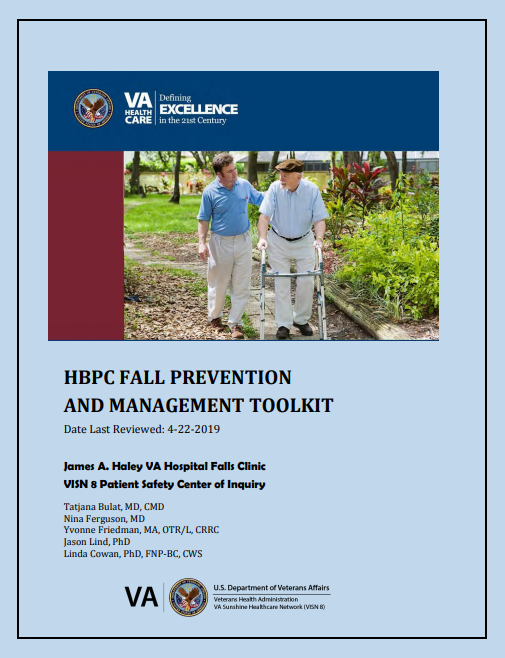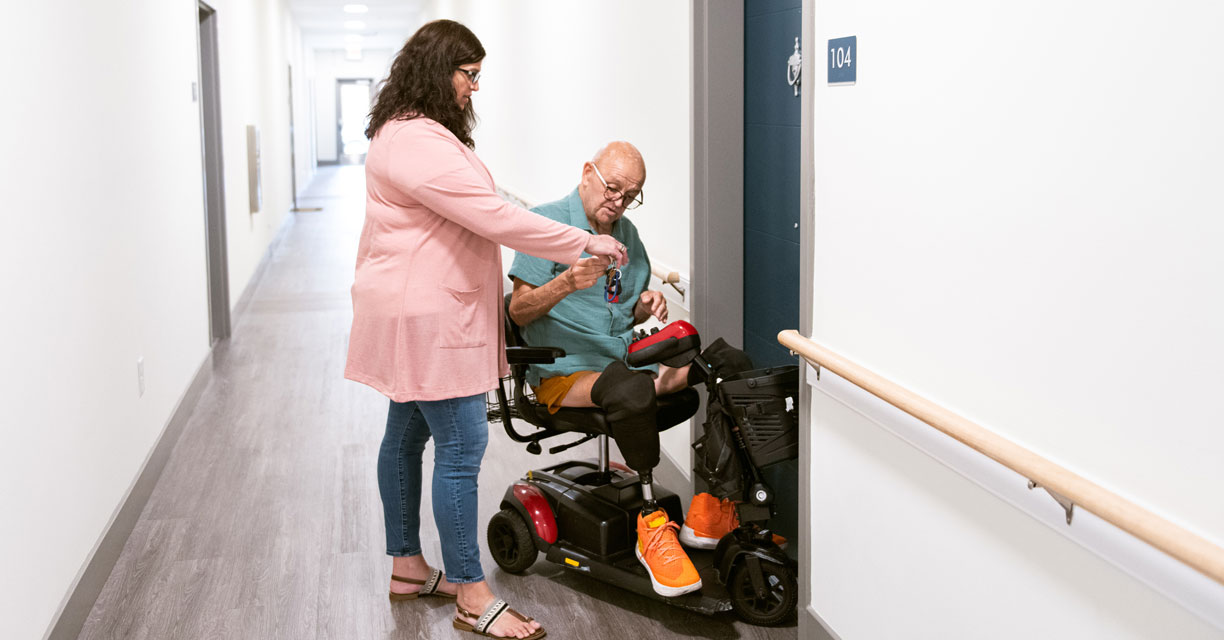Headline
This toolkit shares best practices and screening tool options to identify and care for home-based primary care (HBPC) patients with potential fall risks.
Context
For individuals eligible for HBPC programs, fall-related injuries are both common and potentially life changing, as a fall can affect their ability to live independently. Clinicians from the Department of Veterans Affairs developed this toolkit that offers educational and resource materials for clinicians and caregivers to reduce fall risk factors for community-dwelling older adults. It was created to address the need for standardized fall risk assessment screening tools for individuals receiving HBPC, since other screening tools were designed for use with inpatient populations.
About this Tool
The centerpiece of this toolkit is the HBPC Fall Prevention and Management Flowchart, which is designed to support HBPC teams in fall evaluation, caregiver support, and fall audit and feedback. The flowchart begins with choosing a validated population-specific fall risk assessment screening tool, such as the MAHC-10, mjhFRAT, or CDC-STEADI. The toolkit details examples of interventions based on risk level. It also provides a comprehensive appendix of related resources, as well as HBPC best practices on interdisciplinary team roles, caregiver support and education, and audit and feedback systems.
Takeaways
HBPC teams can use the flowchart and resources provided in this toolkit to help them accurately identify at-risk HBPC patients and mitigate preventable causes of falls. The flowchart is flexible, so HBPC teams can try variations of the toolkit to fit their own workflow, interdisciplinary team structure, and context.



